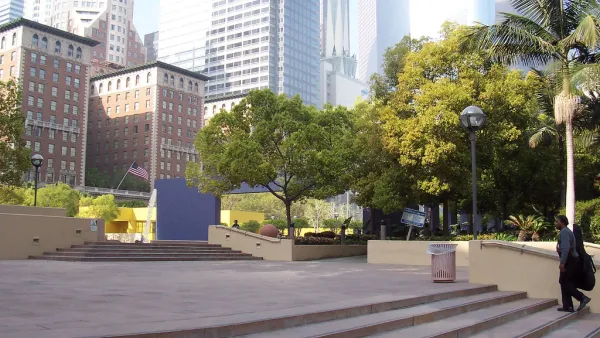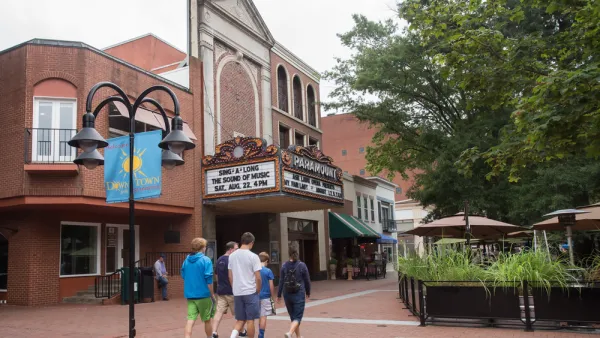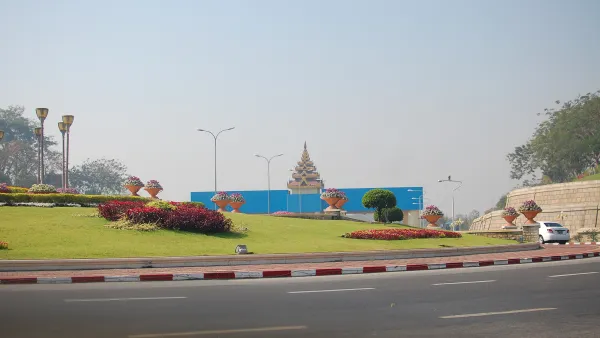Freeway overpasses instead of town squares are now often selected as the preferred public space to promote a non-commercial point of view, but such messaging does little to enhance public discourse, writes planner and urbanist Howard Blackson.
Towns used to be built around public squares, which became the center and podium for all manner of public discourse. Later, buildings came first and public space became an after-thought. Worse yet, now freeway overpasses rather than public squares or plazas are often selected as the place to protest and pontificate about a political or social belief. Planner, urbanist, and Leon Krier disciple, Howard Blackson writes about this less obvious loss to an auto-oriented lifestyle:
Our failure to cultivate the value and quality of our public spaces and public life is found in this picture of protesters and political advocates on a freeway overpass. Our cities are made up of public buildings, streets, squares and private lots, blocks and buildings. But when people want to be heard, seen, and get their message out to as many people as possible, they now gather on freeway bridge overpasses… for its on the freeways where everyone else can be found today, and not on our public street corners and squares.
Blackson goes on to point out how freeway overpasses are not the equals of urban public spaces:
When I see people expressing their views on freeway overpasses, I see our civilization under duress or at least in transition – from gathering in the square to holding signs on an overpass bridge. These are one-way statements and this type of conversation does not facilitate a dialog and understanding. Sadly, this illustrates how far we’ve receded from what urban design guru Leon Krier teaches, “The architecture of the city and public space is a matter of common concern to the same degree as laws and language – they are the foundation of civility and civilization.”
For more of Blackson's thoughts on this topic, see the source article.
FULL STORY: Overpassing the value of public space

National Parks Layoffs Will Cause Communities to Lose Billions
Thousands of essential park workers were laid off this week, just before the busy spring break season.

Retro-silient?: America’s First “Eco-burb,” The Woodlands Turns 50
A master-planned community north of Houston offers lessons on green infrastructure and resilient design, but falls short of its founder’s lofty affordability and walkability goals.

Delivering for America Plan Will Downgrade Mail Service in at Least 49.5 Percent of Zip Codes
Republican and Democrat lawmakers criticize the plan for its disproportionate negative impact on rural communities.

Test News Post 1
This is a summary

Test News Headline 46
Test for the image on the front page.

Balancing Bombs and Butterflies: How the National Guard Protects a Rare Species
The National Guard at Fort Indiantown Gap uses GIS technology and land management strategies to balance military training with conservation efforts, ensuring the survival of the rare eastern regal fritillary butterfly.
Urban Design for Planners 1: Software Tools
This six-course series explores essential urban design concepts using open source software and equips planners with the tools they need to participate fully in the urban design process.
Planning for Universal Design
Learn the tools for implementing Universal Design in planning regulations.
EMC Planning Group, Inc.
Planetizen
Planetizen
Mpact (formerly Rail~Volution)
Great Falls Development Authority, Inc.
HUDs Office of Policy Development and Research
NYU Wagner Graduate School of Public Service





























